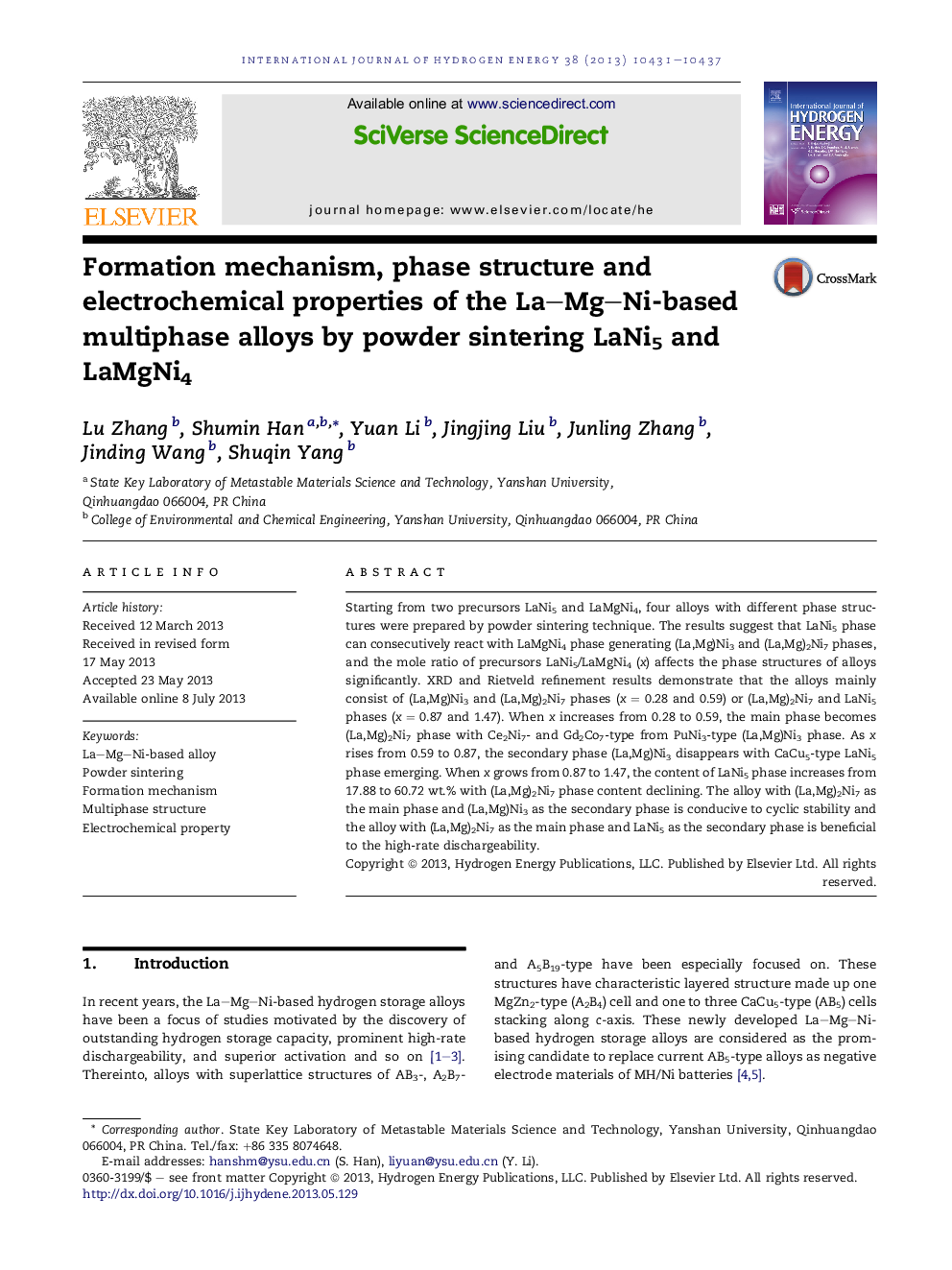| Article ID | Journal | Published Year | Pages | File Type |
|---|---|---|---|---|
| 7722197 | International Journal of Hydrogen Energy | 2013 | 7 Pages |
Abstract
Starting from two precursors LaNi5 and LaMgNi4, four alloys with different phase structures were prepared by powder sintering technique. The results suggest that LaNi5 phase can consecutively react with LaMgNi4 phase generating (La,Mg)Ni3 and (La,Mg)2Ni7 phases, and the mole ratio of precursors LaNi5/LaMgNi4 (x) affects the phase structures of alloys significantly. XRD and Rietveld refinement results demonstrate that the alloys mainly consist of (La,Mg)Ni3 and (La,Mg)2Ni7 phases (x = 0.28 and 0.59) or (La,Mg)2Ni7 and LaNi5 phases (x = 0.87 and 1.47). When x increases from 0.28 to 0.59, the main phase becomes (La,Mg)2Ni7 phase with Ce2Ni7- and Gd2Co7-type from PuNi3-type (La,Mg)Ni3 phase. As x rises from 0.59 to 0.87, the secondary phase (La,Mg)Ni3 disappears with CaCu5-type LaNi5 phase emerging. When x grows from 0.87 to 1.47, the content of LaNi5 phase increases from 17.88 to 60.72 wt.% with (La,Mg)2Ni7 phase content declining. The alloy with (La,Mg)2Ni7 as the main phase and (La,Mg)Ni3 as the secondary phase is conducive to cyclic stability and the alloy with (La,Mg)2Ni7 as the main phase and LaNi5 as the secondary phase is beneficial to the high-rate dischargeability.
Related Topics
Physical Sciences and Engineering
Chemistry
Electrochemistry
Authors
Lu Zhang, Shumin Han, Yuan Li, Jingjing Liu, Junling Zhang, Jinding Wang, Shuqin Yang,
